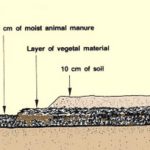Shocking a pond is an important maintenance task that helps to keep your pond water clean, clear, and free from algae and harmful bacteria. Pond shock treatment involves the use of pond shock products that are designed to break down organic matter and eliminate algae blooms. In this guide, we will walk you through the step-by-step process of how to shock a pond effectively.
Why Shock Your Pond?
Before we dive into the steps of shocking a pond, let’s understand why this process is essential for maintaining a healthy pond ecosystem. Over time, organic debris such as leaves, fish waste, and other decaying matter can build up in your pond, leading to nutrient imbalances that promote algae growth.
Shocking your pond helps to break down this organic matter, reducing algae blooms and improving water clarity. It also helps to eliminate harmful bacteria that can pose a threat to your fish and other aquatic life in the pond.
When to Shock Your Pond
It is recommended to shock your pond in the spring before the water temperature reaches 55°F and in the fall after the temperature drops below 55°F. These are optimal times to shock your pond as the cooler water temperatures help to maximize the effectiveness of the shock treatment.

Credit: m.youtube.com

Credit: aquascapes.com
Steps to Shock Your Pond
- Choose the Right Pond Shock Product: Select a pond shock product that is suitable for the size of your pond and the level of algae and organic matter present.
- Measure the Pond Water: Measure the volume of water in your pond to determine the amount of shock treatment needed.
- Turn Off Pond Equipment: Before adding the shock treatment, turn off any pumps or filters in your pond to prevent the product from being filtered out too quickly.
- Apply the Pond Shock: Follow the instructions on the product packaging to apply the correct amount of shock treatment to your pond. Distribute the product evenly across the pond surface.
- Wait and Monitor: Allow the shock treatment to circulate in the pond for the recommended time as per the product instructions. Monitor the water for any changes in color or clarity.
- Turn Equipment Back On: After the specified waiting period, you can turn the pond equipment back on to resume normal filtration and circulation.
- Repeat if Necessary: In cases of severe algae blooms or organic buildup, you may need to repeat the shock treatment after a few days to achieve the desired results.
Tips for Pond Shocking
- Test the Water: Before and after shocking your pond, test the water quality to monitor any changes in pH, ammonia levels, and other parameters.
- Remove Debris: Regularly remove leaves, twigs, and other debris from the pond to prevent organic matter buildup and reduce the need for frequent shocking.
- Use Algaecides Sparingly: While algaecides can be effective in controlling algae, they should be used sparingly and as a supplement to pond shocking.
- Consult a Professional: If you are unsure about how to shock your pond or if you are dealing with persistent algae issues, consider consulting a pond maintenance professional for expert advice.
Conclusion
Shocking your pond is a crucial step in maintaining a healthy and balanced aquatic environment. By following the steps outlined in this guide and incorporating best practices for pond maintenance, you can enjoy a clear, clean pond that is free from algae and harmful bacteria.
Remember to shock your pond at the right time, choose the appropriate shock treatment, and monitor water quality regularly to ensure the effectiveness of the shock treatment. With proper care and maintenance, your pond will thrive, and your aquatic life will flourish.




